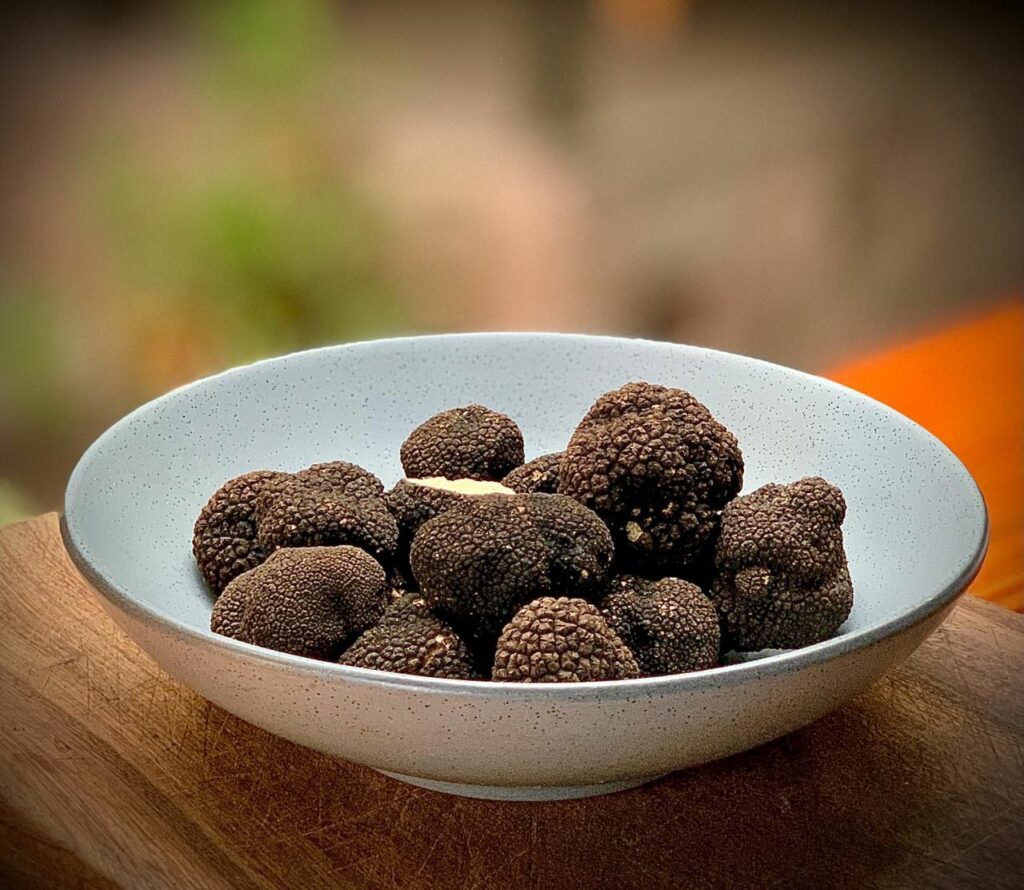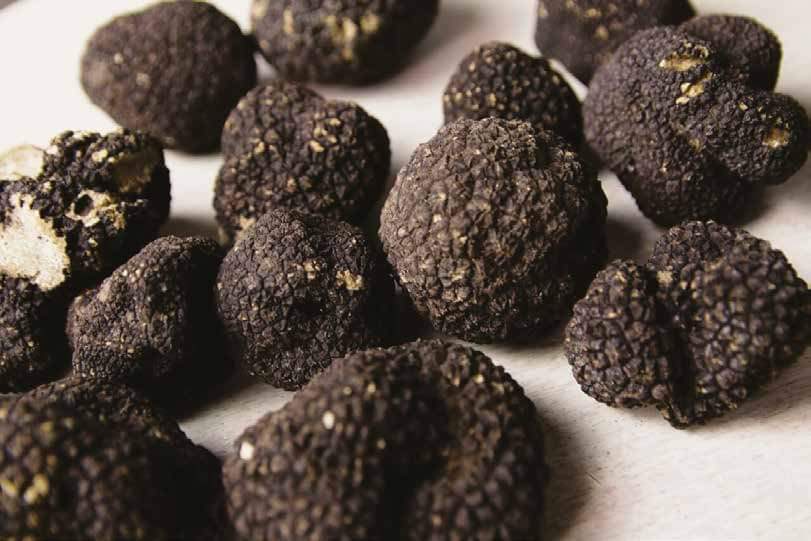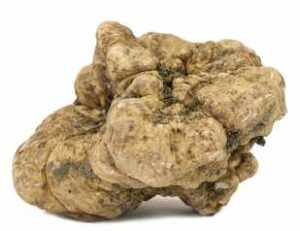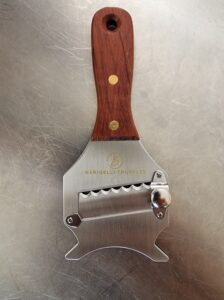Fresh Truffles
When it comes to truffle products, very often the real value of truffles is not talked about. When navigating on websites that sell truffle products, sometimes it is difficult to understand the truffle percentage and therefore the real fresh truffle contained in that product. For this reason we at Barigelli Truffles want to be clear with the type and content of truffle in our products. There are almost 100 kinds of truffle but only 9 are edible and we offer the 4 best: fine white truffle, fine black truffle, bianchetto (white/whitish truffle) and the summer truffle.
Fresh Truffles
When it comes to truffle products, very often the real value of truffles is not talked about. When navigating on websites that sell truffle products, sometimes it is difficult to understand the truffle percentage and therefore the real fresh truffle contained in that product. For this reason we at Barigelli Truffles want to be clear with the type and content of truffle in our products. There are almost 100 kinds of truffle but only 9 are edible and we offer the 4 best: fine white truffle, fine black truffle, bianchetto (white/whitish truffle) and the summer truffle.


what is a truffle?
Please use the information guide below to find out more about the 4 types of truffle that we sell on our website:
Description
The Bianchetto Truffle (or white/whitish truffle), scientific name TUBER ALBIDUM PICO or BORCHII, is distinguished from the white truffle for its characteristic color and smaller size. Outwardly it can be confused with Tuber Magnatum, because it originally has the same characteristics, irregular, smooth and off-white in color but its scent is less strong than the Precious White Truffle, even if its taste is still good, pleasant and intense. It is generally irregular in shape, with a smooth orange surface tending to rust. Inside, it has a whitish gleba, darker in color than the white truffle, with brownish tones with ivory-colored veins.
Aroma and Taste
Persistent, slightly garlicky, very pleasant in moderate quantities
Collection Period
From mid-January to mid-April
Storage Method
The bianchetto truffle must be kept in the refrigerator wrapped in absorbent paper, taking care to wrap each truffle individually. It will then be necessary to change the paper to prevent mold from forming. In this way, it will be possible to preserve the bianchetto truffle for no more than 5/7 days.
Description
The Fine White Truffle, scientific name Tuber Magnatum Pico, in order to be born and develop, needs particular soils with equally particular climatic conditions: the soil must be soft and humid for most of the year, it must be rich in calcium and with good air circulation. It is therefore easy to understand that not all soils have these characteristics and precisely these environmental factors make the white truffle a rare and coveted fruit. If the black truffle of Norcia, in fact, conquers the top of the ranking of black truffles, the white truffle of Alba (or of Acqualagna) deserves by right the first place in the general classification of the most prized black and white truffles: it is in fact the truffle par excellence, the most prized of all.
This type of truffle, in fact, is incredibly rare and grows only in certain environmental conditions: in humid soils rich in potassium and calcium, at no more than 700m above sea level, in symbiosis with oaks, poplars, willows, hazelnuts, limes and black hornbeams. .
Since it grows only in particular environments, its harvest is also very influenced by climatic conditions.
It is also very difficult to find (only the most experienced seekers can find it); but above all, it is impossible to cultivate (unlike the precious black truffle, which can also be successfully cultivated in truffle grounds).
It is all these characteristics (extraordinary flavor, delicacy, difficulty of finding) to make it conquer the first place in the ranking of the most prized truffles.
This delicacy, however, is also reflected in the use that must be made of it. The white truffle, in fact, should be used exclusively raw, perhaps grated on a hot dish, but it should never be cooked: in this case, in fact, it would end up losing all its flavor. This extreme delicacy is another factor that places it at the top of the ranking of the most prized truffles, together with its rarity.
It has a smooth, straw-colored surface and yellow gleba tending at times to hazelnut, with a slight pinkish reflection. The smell it emanates is intense, pungent, delicately garlicky and gaseous.
Aroma and Taste
Very intense, characteristic, reminiscent of methane gas, very pleasant, it is almost always consumed raw as the flavor and aroma change rapidly with cooking
Collection Period
from the end of September to the end of January
Storage Method
Description
The Fine Black Truffle (Norcia black truffle), scientific name TUBER MELANOSPORUM VITT, is sweet, lovable, versatile. The dark pulp, with a color between black and brown, has whitish and dense streaks with wavy or smooth peridium, depending on the growth area.
The peridium has pyramidal warts with a size of 2-5 millimeters, they are gray in color with reddish ferruginous shades. It grows in hilly and mountainous areas in symbiosis with the hazel, oak and English oak. It is considered the most commercially valuable between blacks and is one of the protagonists of international cuisine. It is considered by many chefs as a “diamond at the table” and, thanks also to its lower cost compared to the fine White Truffle, it is used by many kitchens all over the world.
The fine black truffle is also excellent cooked, as well as raw (unlike the fine white truffle, for example), it maintains its fragrance unchanged even if frozen and can also be used for the preparation of fillings and main courses.
For a starter portion we recommend 5-10 grams if instead a main course 10-15 grams per person
Aroma and Taste
Pleasant and delicate, often very intense that does not disappear completely with cooking. The flavor is exquisite and distinctive.
Collection Period
From mid-November to mid-March
Storage Method
The black truffle must be stored in the least cold part of the refrigerator, individually wrapped in absorbent paper making sure that it always remains dry. The black truffle can also be wrapped in absorbent paper and closed in a glass container, always in the refrigerator. This method allows the preservation of the fine black truffle for about 10-15 days.
Description
The Summer Truffle (or scorzone), scientific name TUBER AESTIVUM VITT. grows both in sandy and clayey soils, in broad-leaved woods but also in pine forests. It is very popular and is used for the production of cured meat, cheeses and sauces. The black color and the warty texture contrast with the shy hue of the gleba, which ranges from beige to brown.
Aroma and Taste
This truffle stands out for its pleasant and delicate aroma, slightly fungal, for its strong but not excessive flavor, which can recall porcini mushrooms, and which is highly appreciated.
Collection Period
From May to October
Storage Method
The fresh summer truffle can be kept in the refrigerator wrapped in absorbent paper, which must always remain dry. It must be changed to prevent mold from forming. Each wrapped truffle must be kept in a glass jar. The conservation time of the fresh summer truffle in this way is about 10/15 days.
Truffle Preparation
The truffle should be cleaned only a few minutes before using it, under cold water with a brush, taking care not to damage it as the truffle is very delicate and wonderful.
To get the most out of them, it’s best served as simply as possible, not cooked. It can be sliced or grated over the dish, if used on a warm dish, how can be our pasta and rice, it bring out its best aroma. Good pairing with eggs and meat tartare dish.
To appreciate the taste of the truffle at its best it should be consumed as soon as possible, we advise the sooner the better.
Wrap each truffle in paper individually without removing the ground dirt.
Change the paper frequently. The paper must remain dry to prevent mold and therefore change the paper daily.
Store in the fridge (+2’C/+6’C) in the least cold part of the fridge closed in a glass container, also to prevent the aromatic contamination with other foods.
The fresh truffle pulled out of its habitat and therefore from the ground, in addition to losing quality, also loses weight every day (1-2%). This is a very normal phenomenon when it comes to fresh truffles, so eating it as soon as possible is the best choice.


View Our Fresh Truffles
-

 £170.00 – £215.00Price range: £170.00 through £215.00Select options This product has multiple variants. The options may be chosen on the product page
£170.00 – £215.00Price range: £170.00 through £215.00Select options This product has multiple variants. The options may be chosen on the product page -

 £280.00 – £530.00Price range: £280.00 through £530.00Select options This product has multiple variants. The options may be chosen on the product page
£280.00 – £530.00Price range: £280.00 through £530.00Select options This product has multiple variants. The options may be chosen on the product page
